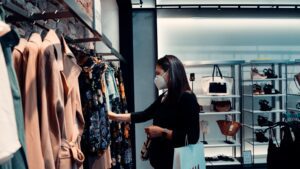Exceptional customer experience (CX) is a valuable force within companies.
It retains customers, instills loyalty, and leads to stronger brand growth. We’ve nodded previously to the value of excellent customer service and experience, with our research indicating that when invested in properly, these initiatives and dollars work hard for you, across industries and regardless of economic environment.
In light of the economic and environmental impacts of COVID-19, companies have been cornered to innovate, create, and deploy entirely new customer experiences at exceptionally fast speeds. As COVID continues to shape the new normal in the realm of CX, we sat down with Fiona Blades, CEO of MESH Experience, one of Marketscience’s key vendor partners, to discuss the deluge of new digital CX responses and what this means for the future of brand experiences. MESH Experience has evolved over time from its origins in measuring and creating brand experiences to more recently focusing on customer experiences – a recent project explored key touchpoints for a global company including brand, app and website to offer slicker, more streamlined experiences.

Both internal and external changes have been made by organizations. “Internally, a large amount of businesses who have had the luxury of maintaining a near-normal workflow have had to shift to an entirely remote, digital workday” states Fiona. Important meetings which used to take exclusively in face-to-face settings have shifted to Zoom video meetings, collaborative on-the-fly brainstorms that happened across office desks have taken place over Slack, and those happy hour and lunch culture-building activities have been replaced by yet another screen. These changes have worked and more often than not, they’ve worked well. So well, in fact, that a handful of big players have already announced plans to keep working this way indefinitely. In fact, a key ingredient to delivering great customer experiences starts with compelling employee experiences. Fostering and measuring such employee initiatives is often overlooked and yet, unengaged employees often equates to poor customer experiences.
Externally, business’s COVID-related pivots weren’t so universally aligned. Organizations unique responses stemmed from the combination of a customer need meshed with the government-dictated safe and legal response. For the telecoms industry, this meant training installers to help customers fix their own cable, internet and cord issues via phone. For hairdressing this meant sourcing customers color combinations and creating DIY videos on how to color hair at home. For restaurants this meant offering delivery of the same quality as dining or pivoting to supply neighborhoods with meal kits and grocery options. The list of companies who profoundly pivoted their business and customer experience strategies over the past few months is vast. “This transformation speaks to the power of digital transformation: how quickly it can be implemented and adopted, and how powerful its effects can be” notes Fiona.

When adopting customer experiences to fit such new worlds, there is both the short/ medium term and long-term focus to be considered. Recall that in the aftermath of the 2008 recession, it took roughly 4 years for the economy to rebound to prior levels. Such facts necessitate the case for long-term brand planning: business will not be ‘going back to normal’ anytime soon – if ever.
The majority of short-medium term changes have largely already been made – albeit, on an emergency basis. They are the examples above – the pivots necessary for businesses to survive and to continue offering service and selling products while meeting the health and safety guidelines. There is, of course, still a lot of short-term work to be done, especially for industries that have been closed for the past few months and are just now re-opening to a new world.

Fiona elaborates that “while the long-term focus constitutes all the same fundamentals, it’s the strategies and details that differ.” For example, over the past few months, businesses have transformed to minimize human interaction, largely relying on digital-only connections. Such pivots were immediately necessary in order to continue operating, but morphing such an experience into a long strategy means that it will look to innovate in sustainable ways that add more value.
For many, Starbucks provided a warm, friendly morning interaction to those starting their day. A longer-term strategy to foster a similar sense of community in the age of mobile-only ordering might be to translate those cheery greetings to messages on the cup. You’d be surprised the power a handwritten “Have a great morning, Jane” can have to someone who has been recently bereft of small-talk and social interaction. “Human quirks are important and attempting to replicate them in small ways over the next few months will have a large impact on future business” explains Fiona.
Another example to consider is around payment and check-out experiences. Being mandated to sign and touch a screen that hundreds of others have touched is no longer a pleasant or safe customer experience, and nor is using a pen to sign and add tip onto a bill. Such experiences have been improved upon in the short-term with Q-tips and hand sanitizer, but a longer-term, CX-friendly payment experience – utilizing for example, tap to pay, apple pay or advanced mobile ordering – is called for.
How can companies drill down on the “special sauce” that made human interactions special and replicate that in a digital or socially distant environment? Unfortunately, there’s no one equation that will lead you to finding and replicating the special sauce in your business. Trial and error will be your friend over the next few months as you test various strategies and measure the response and impact. Some of these changes will be small, like writings on a cup, and others will be larger, like entirely new systems of payment, but all will be powerful in shaping the future of customer experiences, and in driving loyalty, growth and sales for your brand.
